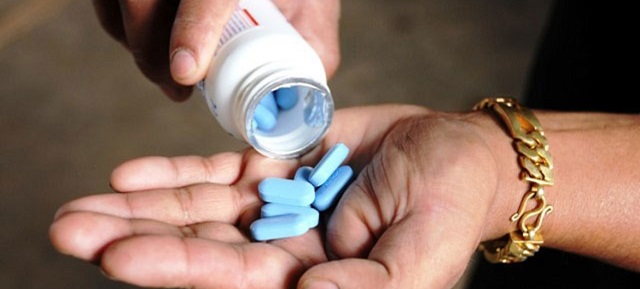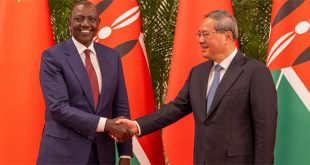
Johannesburg, South Africa | Xinhua | Every two months, 49-year-old Albert Khumalo goes to a public hospital to collect his antiretroviral drugs (ARVs) which are distributed by South African government free of charge. Since tested positive to HIV in 2010, he has been taking the HIV pills.
“I follow the HIV treatment and have never defaulted and that keeps me healthy to work and feed my family,” he told Xinhua. “I collect my pills every two months and my wife encourages me to not default. I have never experienced any side-effects which some few individuals have complained of.”
He said the ARVs treatment helps him live almost a “normal” life where he can work, do all what HIV negative can do.
Khumalo is one of some 4.7 million South African who receive ARVs through the public sector.
South Africa has the biggest and most high-profile HIV epidemic in the world.
According to the Joint United Nations Programme on HIV/AIDS (UNAIDS), in 2018, the total number of people living with HIV was estimated at approximately 7.7 million. For adults aged from 15 to 49 years, an estimated 20.4 percent of the population was HIV positive.
South Africa accounts for about one third of all new HIV infections in southern Africa. In 2018, there were 240,000 new HIV infections and 71,000 South Africans died from AIDS-related illnesses.
South Africa introduced free ARVs in the public sector in April 2004, handing out antiretroviral treatment free to anyone who tests positive. Besides, the government clinics also provide HIV tests for free. This has been largely financed from its own domestic resources.
President Cyril Ramaphosa said on Monday, “It was possible to reduce the number of deaths because we, together with our partners, have rolled out an extensive antiretroviral program reaching millions of people living with the disease.”
He said, “Over the last decade, we made progress in reducing the number of new HIV infections in the population by nearly 60 percent. Our treatment program has contributed to a reduction in the number of deaths due to AIDS by 60 percent.”
He said South Africa is currently circumcising young men to reduce their risk of contracting HIV. The government introduced a program called “She Conquers” to empower young women and girls and prevent them from contracting HIV. It also has one of the highest rates of coverage of preventing mother to child transmission of HIV in Southern Africa, which has substantially reduced rates of infection among children.
According to Avert, an international HIV and AIDS charity based in United Kingdom, South Africa is making good progress towards the the UN “90-90-90” targets, particularly in regards to testing and viral suppression.
The goal consists of meeting three measurable objectives: 90 percent of people living with HIV should know their infection status; 90 percent of those with HIV are receiving sustained antiretroviral therapy; and 90 percent of those receiving such treatment are “virally suppressed,” indicating a negligible risk of transmitting HIV sexually.
Avert said, in 2018, about 90 percent of South African people living with HIV were aware of their status, of which 68 percent were on treatment. Of those diagnosed and on treatment, some 87 percent were virally suppressed.
Ramaphosa said, “While we have reduced deaths and new infections, we still are far from reaching the goal we committed ourselves in 2016 of achieving a 75 percent reduction in HIV infections by 2020.”
His speech came just a day before World AIDS Day, which is commemorated each year on the December 1 and is an opportunity for every community to unite in the fight against HIV, show support for people living with HIV and remember those who have died.
*****
Xinhua
 The Independent Uganda: You get the Truth we Pay the Price
The Independent Uganda: You get the Truth we Pay the Price



